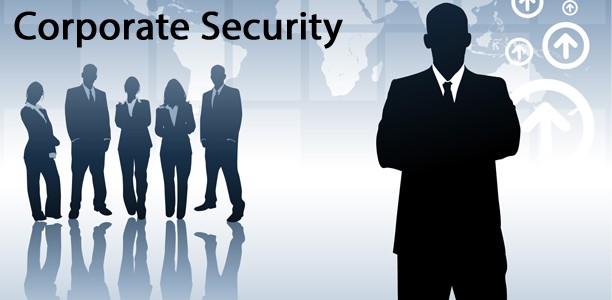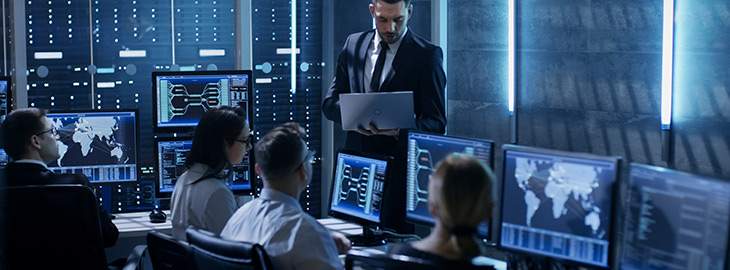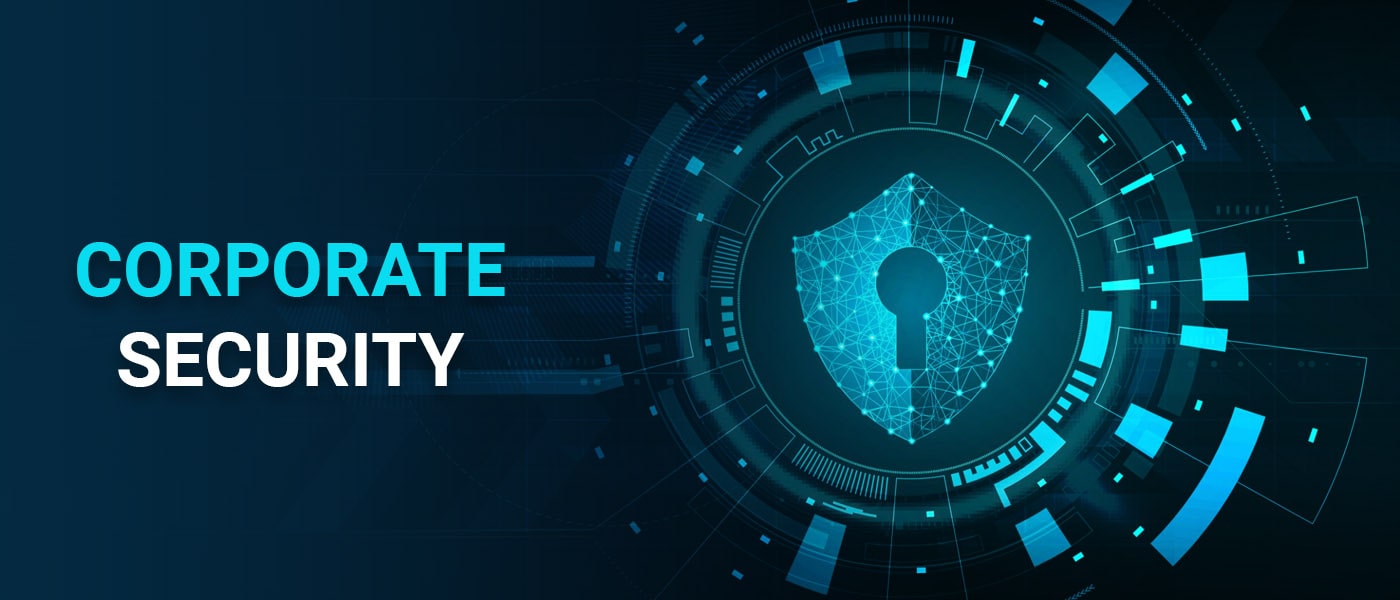Navigating the World of Corporate Security: Secret Insights and Finest Practices
From Cybersecurity to Physical Actions: Enhancing Corporate Security in a Changing World
By integrating the strengths of both cybersecurity and physical security, business can develop a thorough protection approach that attends to the diverse range of risks they face. In this discussion, we will certainly discover the altering risk landscape, the demand to incorporate cybersecurity and physical safety, the execution of multi-factor verification steps, the importance of staff member recognition and training, and the adjustment of security procedures for remote workforces. By examining these vital locations, we will gain beneficial understandings into how organizations can strengthen their corporate protection in an ever-changing globe.
Comprehending the Altering Hazard Landscape
The progressing nature of the contemporary globe necessitates a comprehensive understanding of the transforming hazard landscape for efficient corporate security. In today's interconnected and electronic age, hazards to company security have actually become much more intricate and innovative. As technology advancements and companies end up being increasingly dependent on electronic framework, the possibility for cyberattacks, information breaches, and other security breaches has substantially raised. It is critical for organizations to stay informed and adjust their safety measures to resolve these evolving dangers.
One key element of recognizing the changing risk landscape is acknowledging the various types of hazards that companies deal with. Cybercriminals are regularly creating brand-new methods to make use of vulnerabilities in computer systems and networks. These risks can range from malware and ransomware assaults to phishing scams and social design methods. In addition, physical risks such as theft, vandalism, and corporate reconnaissance continue to be common problems for businesses.
Tracking and assessing the risk landscape is vital in order to recognize potential dangers and vulnerabilities. This involves remaining upgraded on the current cybersecurity fads, analyzing risk intelligence records, and performing routine threat evaluations. By understanding the changing hazard landscape, organizations can proactively implement ideal protection measures to reduce risks and protect their assets, track record, and stakeholders.
Integrating Cybersecurity and Physical Safety
Incorporating cybersecurity and physical safety is critical for extensive company protection in today's electronic and interconnected landscape. As organizations progressively depend on modern technology and interconnected systems, the limits between physical and cyber hazards are coming to be obscured. To effectively secure against these dangers, an alternative strategy that incorporates both cybersecurity and physical safety steps is important.
Cybersecurity focuses on protecting digital properties, such as systems, networks, and data, from unapproved accessibility, disruption, and burglary. Physical safety and security, on the other hand, encompasses measures to secure physical properties, individuals, and centers from risks and susceptabilities. By incorporating these two domain names, organizations can resolve vulnerabilities and threats from both digital and physical angles, consequently improving their overall safety posture.
The assimilation of these two techniques allows for a more thorough understanding of security risks and enables a unified response to incidents. Physical access controls can be improved by integrating them with cybersecurity methods, such as two-factor verification or biometric recognition. Cybersecurity steps can be enhanced by physical security procedures, such as security cams, alarm systems, and secure access factors.

Implementing Multi-Factor Authentication Steps
As organizations progressively prioritize extensive security procedures, one efficient strategy is the implementation of multi-factor authentication measures. Multi-factor verification (MFA) is a security method that needs customers to provide numerous types of recognition to access a system or application. This method adds an added layer of security by combining something the customer understands, such as a password, with something they have, like a protection or a finger print token.
By implementing MFA, organizations can dramatically boost their safety and security posture - corporate security. Traditional password-based authentication has its constraints, as passwords can be easily endangered or neglected. MFA minimizes these dangers by adding an added verification factor, making it harder for unauthorized people to access to delicate details
There are several types of multi-factor verification methods available, consisting of biometric verification, SMS-based confirmation codes, and hardware symbols. Organizations require to examine their certain needs and select one of the most suitable MFA remedy for their official site requirements.
Nevertheless, the application of MFA should be thoroughly prepared and performed. It is critical to strike a balance between safety and usability to stop user frustration and resistance. Organizations must likewise consider potential compatibility issues and provide sufficient training and assistance to guarantee a smooth change.
Enhancing Employee Awareness and Training
To enhance corporate safety, organizations need to focus on improving staff member awareness and training. Several security violations take place due to human mistake or lack of awareness.
Reliable worker recognition and training programs must cover a broad range of subjects, consisting of information security, phishing attacks, social design, password health, and physical security procedures. These programs should be tailored to the specific needs and obligations of various worker roles within the organization. Regular training workshops, simulations, and sessions can assist workers develop the essential abilities and understanding to react and identify to security risks efficiently.
In addition, companies need to encourage a society of safety awareness and offer recurring updates and suggestions to maintain workers notified about the current threats and reduction methods. This can be done with internal interaction networks, such as e-newsletters, intranet websites, and email projects. By promoting a security-conscious workforce, organizations can significantly reduce the chance of security events and safeguard their important assets from unapproved gain access to or compromise.

Adapting Protection Steps for Remote Workforce
Adapting business safety measures to accommodate a remote workforce is important in guaranteeing the protection of sensitive details and properties (corporate security). With the boosting fad of remote work, organizations need to apply appropriate security actions to alleviate the dangers connected with this brand-new way of working
One essential element of adjusting safety and security steps for remote job is establishing protected interaction channels. Encrypted messaging platforms and online personal networks (VPNs) can assist protect sensitive information and avoid unapproved gain access to. Additionally, companies need site web to impose the usage of solid passwords and multi-factor authentication to enhance the protection of remote access.
Another crucial factor to consider is the application of protected remote access services. This includes providing workers with secure access to corporate resources and information through virtual desktop computer infrastructure (VDI), remote desktop methods (RDP), or cloud-based wikipedia reference services. These innovations make sure that delicate information remains protected while allowing workers to do their duties effectively.

Lastly, thorough security understanding training is vital for remote staff members. Training sessions must cover finest practices for firmly accessing and managing delicate information, identifying and reporting phishing efforts, and preserving the overall cybersecurity health.
Conclusion
Finally, as the threat landscape continues to evolve, it is vital for organizations to strengthen their safety measures both in the cyber and physical domains. Integrating cybersecurity and physical security, implementing multi-factor verification steps, and improving worker recognition and training are essential actions in the direction of attaining robust corporate security. Additionally, adjusting security procedures to accommodate remote labor forces is crucial in today's changing globe. By executing these procedures, companies can alleviate threats and shield their beneficial assets from potential hazards.
In this conversation, we will discover the altering threat landscape, the requirement to incorporate cybersecurity and physical safety, the implementation of multi-factor authentication actions, the value of employee understanding and training, and the adjustment of safety and security actions for remote workforces. Cybersecurity procedures can be complemented by physical safety measures, such as monitoring electronic cameras, alarms, and safe accessibility points.
As organizations progressively focus on comprehensive safety actions, one effective method is the execution of multi-factor verification steps.In final thought, as the threat landscape proceeds to evolve, it is crucial for organizations to reinforce their safety and security determines both in the cyber and physical domain names. Incorporating cybersecurity and physical security, executing multi-factor verification actions, and boosting employee awareness and training are vital actions towards achieving robust corporate safety.